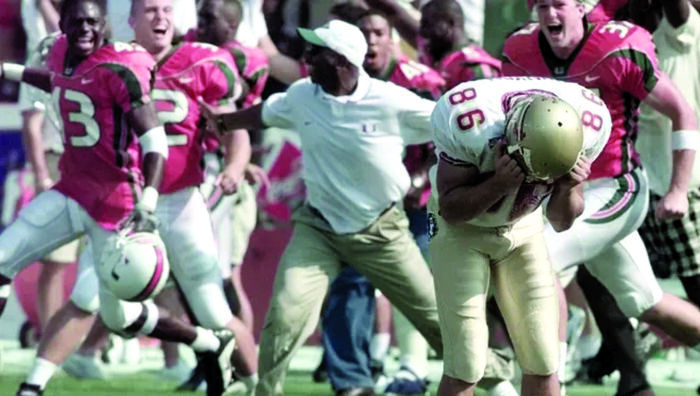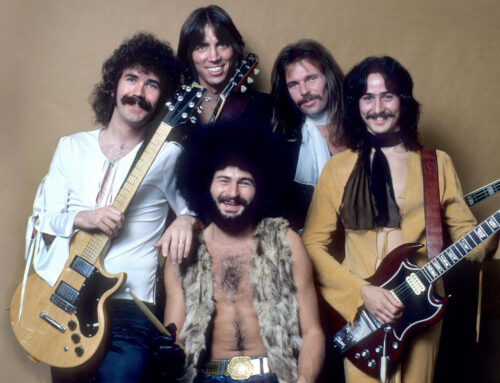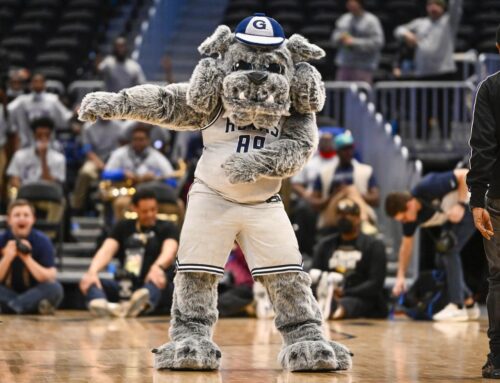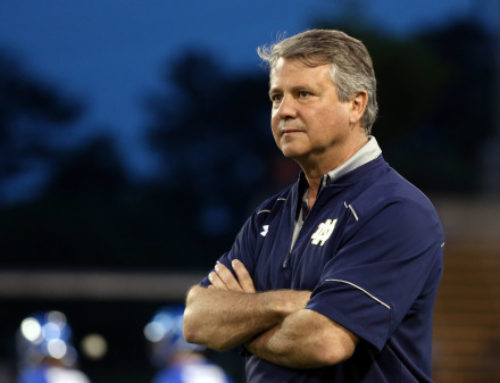The College Football Playoff is set to expand to 12 teams in 2024, which will almost certainly result in a lot more regular-season outcomes being rendered pointless by a playoff rematch. To mark the occasion, we’re revisiting a few prior times when a regular-season outcome – despite the college football conventional wisdom that “Every Game Counts” – was made irrelevant by what happened afterwards.
We began this series last month with a look back at one of the first such outcomes, and one I consider to be a jumping-off point – Florida State vs. Florida in 1996. With the Seminoles a fixture near the top of the polls in this era, I guess it’s no surprise they ended up being in our second entry, too – a 2000 game against Miami whose outcome the BCS computers didn’t so much care about when it came time to solve a “who’s #2?” controversy.
The Preamble
This was a big game, but unlike ’96 FSU/Florida, there wasn’t a lot of time to build up to it because it took place relatively early, in week six of the season. The Seminoles started the season at #2 in the AP poll but had just ascended to #1, surpassing Nebraska after a 59-7 Thursday night blowout of Maryland the week prior impressed the voters more than the Huskers’ 42-24 win over Missouri. Georgia Tech had given the Noles a scare in week two, but FSU was on a run of three straight blowout wins. The Noles were led by that year’s Heisman winner, Chris Weinke, who enjoyed the enviable task of throwing to future NFL star Anquan Boldin and Marvin “Snoop” Minnis.
Miami, too, had a bunch of blowouts and one close game entering this contest, but unlike FSU, the Canes, who opened the season at #5, lost their close call, at Washington in week two. They responded by blowing out Big East foes West Virginia and Rutgers (wasn’t 2000 college football grand?) leading into this matchup to earn a #7 ranking. Miami was a young, upstart team finally starting to see the results of Butch Davis’ program-building after NCAA sanctions led to some struggles in the mid to late 1990s; most of the Canes’ 2000 roster returned in 2001 to be part of one of the most dominant national championship teams of all time.
On this day, they delivered their biggest message yet of what was to come.
The Game
Miami raced out to a 17-0 lead in the first half as Weinke moved the ball but threw two costly interceptions. Mistakes dogged the Seminoles all game, in fact, as they also fumbled the ball away once, missed a chip shot field goal, took several delay-of-game penalties, and dropped a half-dozen Weinke passes.
However, it was a mistake by the men in orange that set up a wild final couple of minutes. With Miami up 20-17, and after catching a first-down pass with just over two minutes left that would have all but clinched the game had he just gone down, Najeh Davenport was stripped of the ball by Tay Cody near midfield. The Noles recovered. Within a minute of game time, Weinke took FSU into the end zone and made it 24-20 Seminoles.
However, it only took the Canes three plays to get into scoring range on the ensuing drive, as Dorsey hit Santana Moss, Jeremy Shockey and Reggie Wayne (good Lord, the talent on this team) on consecutive plays. A few plays later, Dorsey hit Moss on a third-down play to get inside the 10, and then it was Shockey catching the winning score.
Weinke somehow got his team to field goal range in 30 seconds, but the Noles had already missed a 22-yard attempt in the game, and a 48-yarder to tie it went – guess what – wide right. It was the third time in nine years FSU missed a decisive field goal wide right against Miami; incredibly, two years later the Noles would again miss a winning FG against the Canes, this one wide left.
What happened next
Nebraska moved back to #1 the next week, but later in October, they were summarily dumped from the national title race courtesy of a blowout by Oklahoma, which went through its schedule undefeated (albeit not without tests from Oklahoma State and, in the Big 12 title game, Kansas State) and locked in a spot in the BCS title game that year, the Orange Bowl. The #2 team at the end probably would have been, for the second straight year, Virginia Tech, but Michael Vick suffered an ankle injury in October, and Miami was the beneficiary, defeating the Hokies 41-21 in a huge #2 vs #3 battle. The Canes blasted their remaining three opponents to finish 10-1.
FSU, too, made mincemeat of the rest of their schedule after the Miami game, never even being tested. Like the Canes, they picked up a marquee win in November, housing then-#4 Florida 30-7 in Tallahassee. Miami was ranked #2 in the AP poll, ahead of Florida State, on the strength of a head-to-head win.
Adding a layer of interest to the discussion was Washington, who had itself gone 10-1 and defeated Miami, ensuring that someone’s regular-season loss to a fellow contender would have to be ignored to set up a two-team national title game. However, while fans in Seattle likely objected, the Huskies were relegated to #4, probably because it had won a whopping seven games by one possession; outside of a blowout of Washington State in its regular season finale, UW’s only win by more than 12 came against Idaho in the season opener.
The controversy
So it seemed simple – FSU and Miami were widely agreed as the best two of this strange round-robin, and since Miami had won head-to-head, they’d go to the Orange Bowl.
But then the BCS stepped in.
The final BCS standings gave the nod to FSU thanks to a hefty edge in the computer rankings – in fact, the computers, on average, had the Noles ranked #1, ahead of unbeaten Oklahoma. Miami was a distant third.
Seems defensible enough – Miami had played three marquee games, but the rest of its schedule was Big East flotsam; FSU had three ranked wins and had the advantage of delivering the final big statement by walloping Florida. And after all, in this weird turn of events, all three teams had lost to one of the other two major contenders. Someone had to get hosed.
Nevertheless, there were howls about this particular controversy, and they resulted in the BCS making changes. The next year, it ordered computer rankings not to consider margin of victory and added a ‘quality-win’ component that gave a team a boost based on the highest BCS rank of a team they defeated, if that team was in the top 15. Miami went to the Sugar Bowl to handily beat Florida – there was, in fact, talk that the Canes would earn the AP national title if FSU beat Oklahoma the following night, presaging a similar situation in 2003. Washington went to the Rose Bowl to beat Purdue.
The final outcome
The national title game ended up being a bit of a snooze, with the Sooners winning 13-2. Oddly, considering the teams’ high-powered offenses, neither team did much with the ball, and OU led 3-0 at halftime. It was the fourth quarter before anyone got in the end zone, and even that TD was set up by the Sooners recovering a Weinke fumble deep in FSU territory. That score made it 13-0 and essentially sewed up the game. Only a bad punt snap and a heads-up play by the Sooners’ punter to run it into the end zone for a safety (rather than give FSU a goal-to-go opportunity) got the Seminoles on the board in the final minute.
The anticlimactic outcome surely did nothing to quiet the complaints about the BCS, but the system lasted over a decade longer. Several more controversies remained before the powers that be moved on to a playoff – and we’ll address another one next time.





Elite header photo.
These games are really starting to feel like a lifetime ago.
Tangentially related, but the 2004 Miami-Florida State game felt like the biggest thing in the world at the time (as the first ACC meet-up of the two, right at the start of the first season Miami joined the league) and that series just hasn’t reached that level of import since.
I remember that game. I think it was Labor Day night. Felt like a real happening at the time.